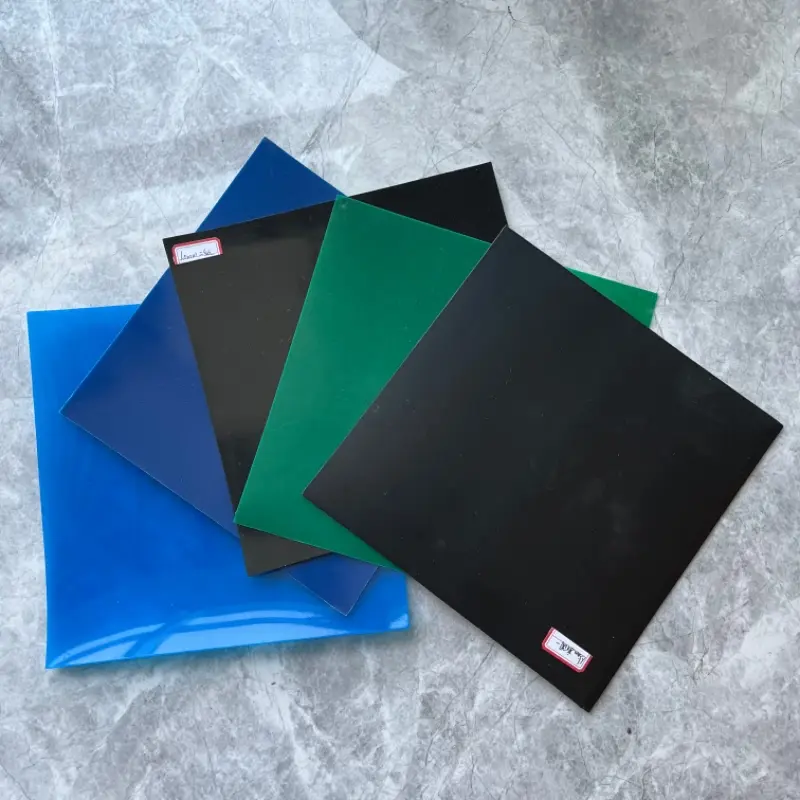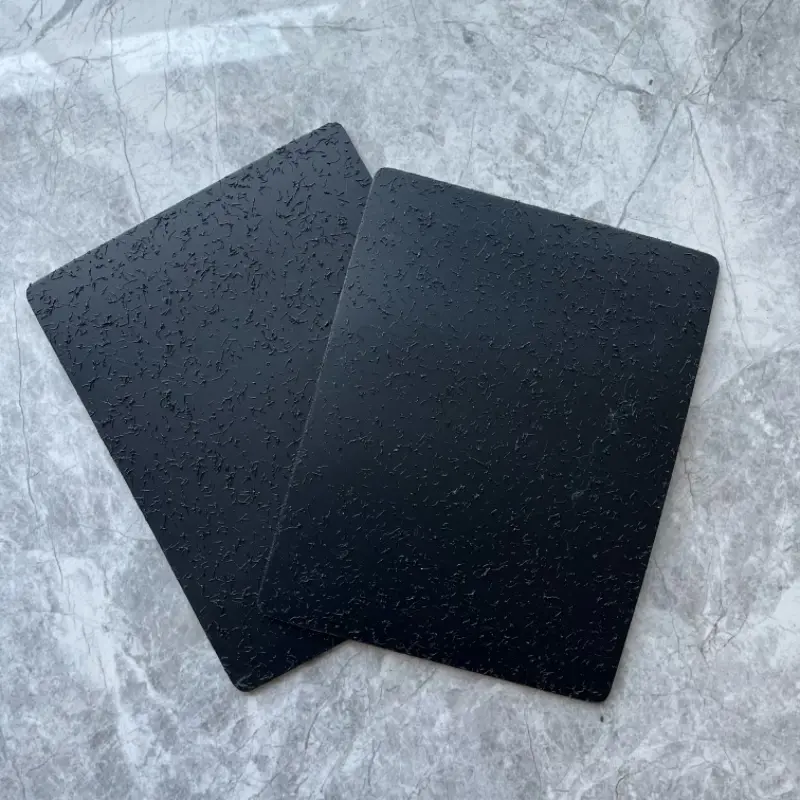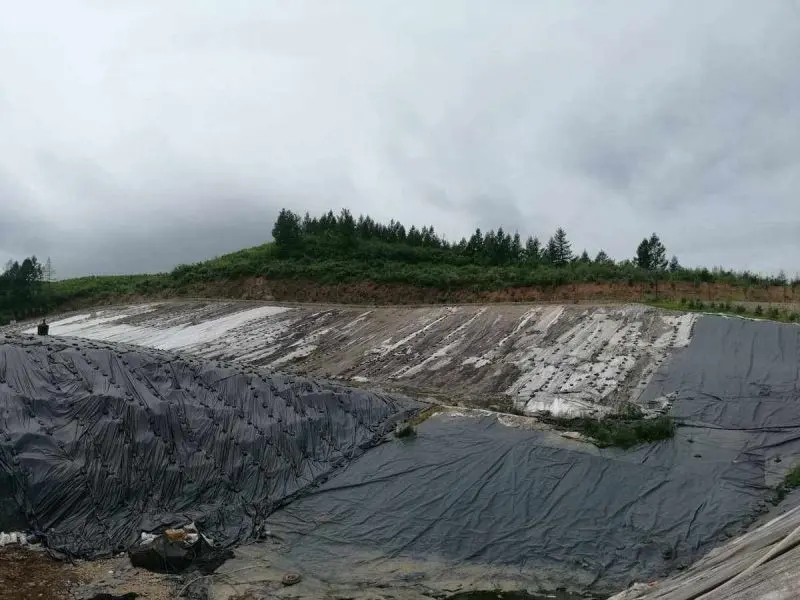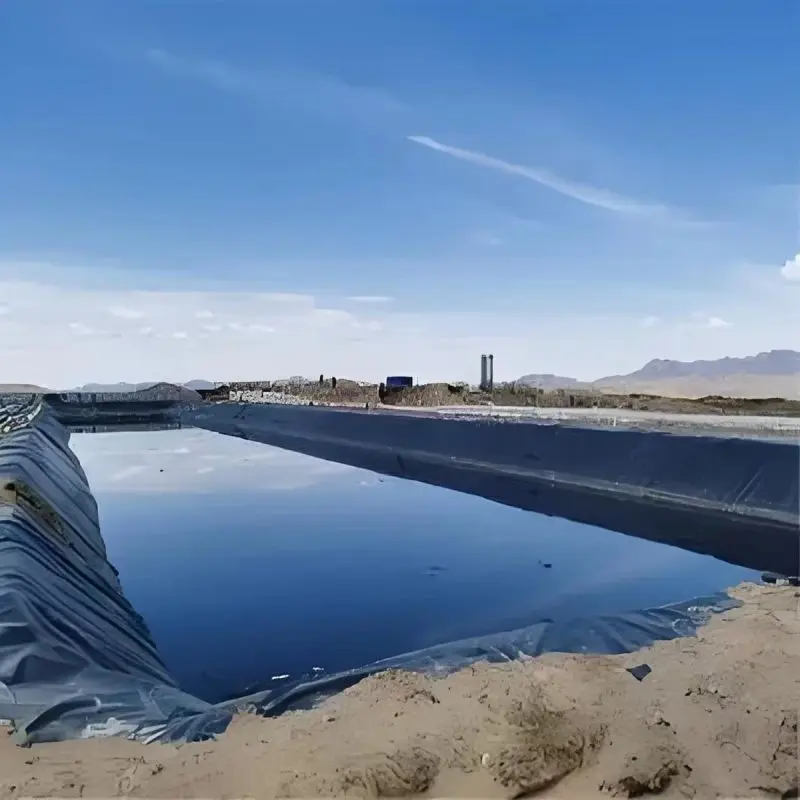HDPE Liner Solutions for Durable and Efficient Pond Construction
Ponds serve crucial roles in various industries, from agriculture and aquaculture to environmental protection and wastewater management. Ensuring their structural integrity and sustainability is essential, driving the demand for robust, reliable pond liner solutions. High-Density Polyethylene (HDPE) liners have emerged as a versatile choice, offering durability, flexibility, and environmental benefits that meet the diverse needs of modern pond construction projects.
523281941.webp)
Introduction to HDPE Liners
HDPE liners are synthetic membranes manufactured from high-density polyethylene, a thermoplastic polymer known for its exceptional mechanical properties and chemical resistance. These liners create impermeable barriers that prevent leakage and seepage, safeguarding ponds against water loss and environmental contamination. HDPE liners are widely recognized for their versatility and applicability across various sectors:
Agricultural Applications: In agriculture, HDPE liners are pivotal in constructing water storage ponds used for irrigation, drought management, and crop production. These liners ensure efficient water retention and distribution, supporting sustainable farming practices and mitigating water scarcity issues.
Aquaculture and Fisheries: HDPE liners play a crucial role in aquaculture operations by creating ponds and reservoirs that maintain optimal water levels and quality for aquatic life. They prevent groundwater infiltration and facilitate effective water treatment, ensuring healthy environments for fish and marine organisms.
Environmental Remediation: Used extensively in environmental engineering projects, HDPE liners serve in containment systems for hazardous waste, landfill caps, and soil remediation sites. They prevent pollutants from leaching into soil and groundwater, minimizing environmental impact and promoting site rehabilitation.
Industrial Applications: Industries rely on HDPE liners for chemical containment, tailings management, and process water storage. These liners are resistant to corrosion and chemical degradation, offering reliable protection against hazardous substances and ensuring regulatory compliance.
Advantages of HDPE Liners
HDPE liners offer numerous advantages that make them superior to traditional pond construction materials:
Durability: HDPE liners are engineered to withstand mechanical stress, environmental factors, and long-term exposure to UV radiation without deterioration. They maintain structural integrity and performance over extended periods, reducing maintenance costs and operational disruptions.
Flexibility and Adaptability: Unlike rigid materials such as concrete or clay, HDPE liners are flexible and can conform to varying terrain contours and pond geometries. This flexibility simplifies installation, minimizes material wastage, and accommodates site-specific design requirements.
Chemical Resistance: HDPE liners exhibit high resistance to chemicals, acids, alkalis, and hydrocarbons, making them suitable for applications involving industrial effluents, agricultural chemicals, and wastewater contaminants. They provide reliable containment and prevent environmental contamination.
Low Permeability: Engineered with low permeability properties, HDPE liners effectively prevent water seepage and leakage. They maintain pond water levels, conserve water resources, and optimize water management practices in arid and water-stressed regions.
Ease of Installation: HDPE liners are lightweight, compact, and easy to transport, facilitating rapid installation and reducing labor-intensive construction processes. Prefabricated liners can be customized to fit specific project dimensions, ensuring efficient deployment and operational efficiency.
Environmental Sustainability: By conserving water resources, preventing soil erosion, and minimizing environmental impact during installation and operation, HDPE liners contribute to sustainable development goals. They support eco-friendly practices and enhance ecological resilience in aquatic habitats and surrounding ecosystems.
Applications of HDPE Liners in Pond Construction
Water Storage and Irrigation Ponds: HDPE liners are indispensable for storing irrigation water, optimizing water distribution, and supporting agricultural productivity. They enable farmers to manage water resources effectively, enhance crop yields, and mitigate the impact of drought conditions.
Aquaculture and Fish Farming: Aquaculture facilities utilize HDPE liners to create ponds and reservoirs that maintain water quality, facilitate fish growth, and prevent aquatic disease outbreaks. These liners ensure optimal conditions for aquaculture operations and promote sustainable seafood production.
Wastewater Treatment Facilities: HDPE liners form essential components of wastewater treatment systems by containing sewage, industrial effluents, and contaminated water. They prevent pollutants from entering soil and groundwater, safeguarding public health and environmental quality.
Landfill Containment and Rehabilitation: Landfills employ HDPE liners in liner systems designed to isolate and contain solid waste materials, prevent leachate migration, and minimize environmental contamination. These liners support landfill engineering practices and promote safe waste disposal practices.
Mining and Industrial Applications: HDPE liners are critical for managing tailings storage facilities, chemical storage ponds, and industrial wastewater containment systems. They provide reliable containment solutions for hazardous substances and ensure compliance with regulatory standards.

Installation and Maintenance Practices
Successful installation and maintenance of HDPE liners require adherence to industry best practices and quality assurance protocols:
Site Preparation: Conduct comprehensive site surveys, soil testing, and geotechnical assessments to evaluate soil stability and foundation conditions. Prepare the site by removing debris, leveling terrain, and addressing potential drainage issues.
Liner Deployment: Unroll and position prefabricated HDPE liners according to project specifications, ensuring proper alignment, overlap, and sealing of liner panels. Employ specialized equipment and trained personnel to minimize wrinkles, folds, and potential damage during installation.
Seaming and Welding: Utilize hot wedge welding or extrusion welding techniques to join HDPE liner panels and create seamless, watertight seams. Conduct non-destructive testing (NDT) and hydrostatic testing to verify seam integrity and ensure compliance with design requirements.
Quality Control and Assurance: Implement rigorous quality control measures throughout the installation process, including visual inspections, leak testing, and geomembrane integrity surveys. Document installation procedures, seam test results, and as-built drawings for future reference and regulatory compliance.
Monitoring and Maintenance: Establish regular inspection schedules to monitor HDPE liner performance, identify potential issues, and address maintenance needs promptly. Conduct periodic repairs, seam reinforcements, and geomembrane assessments to extend liner lifespan and optimize operational efficiency.
Environmental and Regulatory Considerations
HDPE liners are designed and installed in accordance with regulatory requirements and environmental standards:
Regulatory Compliance: Comply with local, state, and federal regulations governing liner design, installation, and environmental protection measures. Obtain necessary permits, approvals, and certifications to ensure legal compliance and project authorization.
Environmental Impact Assessment: Conduct environmental impact assessments (EIAs) to evaluate potential risks, mitigate adverse impacts, and implement environmental management plans. Consider factors such as habitat preservation, water quality protection, and ecological restoration efforts.
Sustainable Practices: Embrace sustainable construction practices by minimizing material wastage, optimizing resource utilization, and adopting eco-friendly installation techniques. Promote biodiversity conservation, habitat enhancement, and natural resource stewardship in project planning and implementation.
Technological Advancements and Innovation
Advancements in HDPE liner technology continue to drive innovation and enhance performance capabilities:
Advanced Material Formulations: Developments in polymer chemistry and material science enable the production of HDPE liners with enhanced mechanical strength, chemical resistance, and UV stability. Tailored material formulations address specific environmental conditions and project requirements.
Geomembrane Reinforcement Techniques: Integrate geotextiles, geogrids, and other reinforcement materials to enhance HDPE liner stability, anchorage, and long-term durability. Composite liner systems combine multiple layers of geosynthetic materials for enhanced containment and protection capabilities.
Smart Monitoring Systems: Implement sensor-based monitoring systems and remote telemetry technologies to monitor HDPE liner performance in real time. Collect data on temperature variations, stress distributions, and deformation patterns to optimize operational efficiency and facilitate predictive maintenance strategies.
Digital Design and Modeling: Utilize computer-aided design (CAD) software and finite element analysis (FEA) tools to simulate HDPE liner behavior, stress distribution, and structural integrity. Virtual modeling enhances design accuracy, identifies potential risks, and optimizes liner system performance prior to installation.
Advantages of HDPE Liners over Traditional Pond Building Materials
HDPE liners offer significant advantages over traditional pond construction materials such as concrete and compacted clay. These advantages stem from their unique properties and application flexibility, making them a preferred choice for various industries and environmental engineering projects:
Durability and Longevity: HDPE liners are engineered from high-density polyethylene, a robust thermoplastic polymer renowned for its exceptional durability and resistance to environmental stressors. Unlike concrete, which may crack under fluctuating temperatures or chemical exposure, HDPE liners maintain structural integrity over extended periods. For instance, in agricultural applications, HDPE liners have been shown to withstand harsh climates and mechanical stresses associated with irrigation water storage, enhancing their lifespan and operational reliability.
Flexibility and Adaptability: Unlike rigid materials like concrete or clay, HDPE liners are flexible and can conform to various terrain contours and pond geometries. This flexibility simplifies installation processes, minimizes material wastage, and accommodates site-specific design requirements. A case study conducted by Haoyang Environmental Co., Ltd. in collaboration with agricultural stakeholders demonstrated how HDPE liners facilitated the construction of irregularly shaped irrigation ponds, optimizing water storage capacity and supporting sustainable farming practices.
Chemical and Environmental Resistance: HDPE liners exhibit high resistance to chemicals, acids, alkalis, and hydrocarbons, making them suitable for applications involving industrial effluents, agricultural chemicals, and wastewater contaminants. Research conducted by Environmental Protection Agency highlighted the efficacy of HDPE liners in landfill engineering, where they prevented leachate migration and groundwater contamination, safeguarding environmental health and promoting sustainable waste management practices.
Low Permeability and Water Conservation: Engineered with low permeability properties, HDPE liners effectively prevent water seepage and leakage, thereby conserving water resources and optimizing water management practices. Studies conducted in collaboration with mining industries demonstrated how HDPE liners mitigated environmental risks associated with tailings storage facilities, ensuring regulatory compliance and environmental sustainability.
Ease of Installation and Maintenance: HDPE liners are lightweight, compact, and easy to transport, facilitating rapid installation and reducing labor-intensive construction processes. Prefabricated liners can be customized to fit specific project dimensions, ensuring efficient deployment and operational efficiency. Ongoing monitoring and maintenance practices involve regular inspections, leak testing, and geomembrane integrity surveys to detect potential issues and ensure prolonged liner lifespan.
In conclusion, the key advantages of HDPE liners, including durability, flexibility, chemical resistance, low permeability, and ease of installation, position them as a preferred choice for modern pond construction projects across diverse industries. Their role in enhancing water management practices, protecting natural resources, and promoting environmental sustainability underscores their value in infrastructure development.

Key Factors for Successful Deployment
The installation of HDPE liners involves a systematic approach and adherence to industry best practices to ensure optimal performance and longevity. Here's a comprehensive overview of the installation process and critical considerations:
Site Preparation: Begin with comprehensive site surveys, soil testing, and geotechnical assessments to evaluate soil stability and foundation conditions. Address any potential drainage issues and prepare the site by clearing debris, leveling terrain, and establishing a stable foundation to support the HDPE liner.
Liner Deployment: Unroll and position prefabricated HDPE liners according to project specifications, ensuring proper alignment, overlap, and sealing of liner panels. Utilize specialized equipment and trained personnel to minimize wrinkles, folds, and potential damage during installation. Case studies conducted by leading environmental engineering firms highlighted the importance of precise liner deployment techniques in achieving seamless integration and optimal containment performance.
Seaming and Welding: Employ advanced welding techniques such as hot wedge welding or extrusion welding to join HDPE liner panels and create continuous, watertight seams. Conduct non-destructive testing (NDT) and hydrostatic testing to verify seam integrity and ensure compliance with design requirements. Research collaborations with academic institutions demonstrated the effectiveness of seam reinforcement strategies in enhancing liner durability and operational reliability.
Quality Control and Assurance: Implement rigorous quality control measures throughout the installation process, including visual inspections, leak testing, and geomembrane integrity surveys. Document installation procedures, seam test results, and as-built drawings for future reference and regulatory compliance. Case studies conducted by environmental consulting firms emphasized the importance of proactive quality assurance protocols in mitigating installation risks and optimizing liner performance.
Monitoring and Maintenance: Establish regular inspection schedules to monitor HDPE liner performance, identify potential issues, and address maintenance needs promptly. Conduct periodic repairs, seam reinforcements, and geomembrane assessments to extend liner lifespan and optimize operational efficiency. Collaborative efforts with industry stakeholders underscored the value of proactive maintenance practices in minimizing downtime and ensuring continuous containment capabilities.
Successful HDPE liner installation relies on meticulous planning, skilled labor, and adherence to industry standards to achieve reliable performance and regulatory compliance. By prioritizing site preparation, precise liner deployment, advanced welding techniques, quality assurance protocols, and proactive maintenance strategies, stakeholders can maximize the longevity and effectiveness of HDPE liners in pond construction and environmental engineering projects.
Environmental and Regulatory Issues
The use of HDPE liners in pond construction necessitates careful consideration of environmental impacts, regulatory requirements, and sustainable practices to ensure responsible project implementation and long-term environmental stewardship. Here's an in-depth exploration of key considerations:
Regulatory Compliance: Prioritize compliance with local, state, and federal regulations governing liner design, installation, and environmental protection measures. Obtain necessary permits, approvals, and certifications from regulatory authorities to ensure legal compliance and project authorization. Case studies conducted by environmental regulatory agencies underscored the importance of adherence to regulatory frameworks in promoting safe, environmentally responsible pond construction practices.
Environmental Impact Assessment (EIA): Conduct comprehensive environmental impact assessments (EIAs) to evaluate potential project impacts on natural habitats, water quality, and ecosystem health. Collaborate with environmental consulting firms to identify mitigation measures, minimize adverse impacts, and incorporate environmental management plans into project design and implementation. Research collaborations with academic institutions highlighted the efficacy of EIAs in supporting sustainable development goals and enhancing stakeholder engagement.
Sustainable Construction Practices: Embrace sustainable construction practices by minimizing material wastage, optimizing resource utilization, and adopting eco-friendly installation techniques. Promote biodiversity conservation, habitat enhancement, and natural resource stewardship through collaborative initiatives with local communities and environmental organizations. Industry case studies demonstrated how sustainable practices contributed to ecosystem resilience, water conservation, and environmental sustainability in pond construction projects.
Public Health and Safety: Prioritize public health and safety considerations by implementing effective risk management strategies, emergency response plans, and occupational health protocols during HDPE liner installation and operation. Collaborate with health and safety professionals to ensure worker safety, mitigate potential hazards, and maintain regulatory compliance throughout project lifecycle stages.
Community Engagement and Stakeholder Consultation: Foster transparent communication, community engagement, and stakeholder consultation throughout the project lifecycle to address concerns, solicit feedback, and build consensus on environmental stewardship goals. Case studies conducted by environmental advocacy groups highlighted the importance of inclusive decision-making processes in promoting environmental justice and sustainable development outcomes.
By addressing environmental and regulatory considerations, prioritizing sustainable practices, and engaging stakeholders in collaborative partnerships, stakeholders can promote responsible pond construction practices and maximize the environmental, social, and economic benefits of HDPE liners. Together, these efforts contribute to resilient ecosystems, enhanced water resource management, and sustainable development outcomes in pond construction projects.
Helps with Water Conservation and Sustainable Farming Practices
HDPE liners play a pivotal role in promoting water conservation and supporting sustainable agricultural practices through their effective management of irrigation water resources. Here’s how HDPE liners contribute to these objectives:
Efficient Water Retention: HDPE liners create impermeable barriers that prevent water seepage and leakage, ensuring efficient water retention within irrigation ponds and reservoirs. Research conducted by agricultural institutions demonstrated that HDPE liners significantly reduce water loss due to evaporation and infiltration, optimizing irrigation efficiency and crop yield outcomes.
Drought Mitigation: In regions prone to drought and water scarcity, HDPE liners enable farmers to store and utilize rainwater or diverted surface water for irrigation purposes. Case studies conducted in water-stressed regions highlighted the role of HDPE liners in mitigating the impact of drought conditions, ensuring continuous water supply for agricultural production and enhancing farm resilience.
Sustainable Water Management: By conserving water resources and minimizing irrigation inefficiencies, HDPE liners support sustainable water management practices in agriculture. Collaborative initiatives between agricultural stakeholders and environmental organizations emphasized the importance of HDPE liners in reducing water usage, promoting ecosystem health, and mitigating environmental impacts associated with excessive water extraction.
Cost-Effective Solutions: HDPE liners offer cost-effective solutions for water storage and irrigation infrastructure development compared to traditional methods such as concrete reservoirs or earthen ponds. Economic analyses conducted by economic research firms demonstrated that HDPE liners reduce construction costs, maintenance expenses, and operational losses associated with water wastage, enhancing agricultural profitability and long-term sustainability.
Environmental Benefits: Through their role in enhancing water conservation practices, HDPE liners contribute to environmental sustainability by preserving natural water resources, minimizing soil erosion, and reducing greenhouse gas emissions associated with agricultural water pumping and distribution. Studies conducted by environmental impact assessment agencies underscored the environmental benefits of HDPE liners in supporting biodiversity conservation and mitigating climate change impacts.
In conclusion, HDPE liners represent a transformative technology in agriculture, promoting water conservation, enhancing irrigation efficiency, and supporting sustainable agricultural practices. Their adoption contributes to resilient farming systems, food security, and environmental stewardship in regions facing water scarcity challenges.
619217790.webp)
Environmental Protection and Regulatory Compliance in Industrial Applications
HDPE liners are integral to environmental protection and regulatory compliance in various industrial applications, including chemical containment, wastewater management, and hazardous waste disposal. Here’s how HDPE liners uphold environmental standards and ensure regulatory compliance:
Containment of Hazardous Substances: HDPE liners create secure containment barriers that prevent hazardous substances, industrial chemicals, and pollutants from leaching into soil and groundwater. Case studies conducted in industrial facilities highlighted the efficacy of HDPE liners in mitigating environmental risks and safeguarding public health by isolating contaminants and preventing environmental contamination incidents.
Landfill Engineering: In landfill engineering, HDPE liners serve as primary components of composite liner systems designed to encapsulate solid waste materials and prevent leachate migration. Research collaborations between environmental engineering firms and regulatory agencies demonstrated that HDPE liners effectively isolate landfill contents, minimizing leachate generation and protecting groundwater quality from contamination.
Compliance with Regulatory Standards: HDPE liners adhere to stringent regulatory standards, including federal, state, and local environmental regulations governing liner design, installation, and performance criteria. Regulatory compliance audits and inspections conducted by environmental regulatory authorities ensure that HDPE liner systems meet prescribed durability, permeability, and chemical resistance requirements for industrial applications.
Environmental Impact Mitigation: By minimizing the environmental footprint of industrial operations, HDPE liners support sustainable development goals and promote responsible waste management practices. Environmental impact assessments (EIAs) conducted by environmental consulting firms underscored the role of HDPE liners in mitigating environmental impacts, reducing greenhouse gas emissions, and enhancing ecosystem resilience in industrial settings.
Emergency Response Preparedness: HDPE liners enhance emergency response preparedness by containing spills, leaks, and environmental incidents within industrial facilities. Collaborative efforts between industry stakeholders and emergency response teams highlighted the importance of proactive containment measures in minimizing environmental liabilities and ensuring rapid incident mitigation.
In summary, HDPE liners play a critical role in ensuring environmental protection, regulatory compliance, and sustainable waste management practices in industrial applications. Their use supports safe chemical containment, landfill engineering, and environmental stewardship initiatives, contributing to environmental sustainability and community well-being.
Technological Progress and Future Trends
Technological advancements in HDPE liners continue to drive innovation and expand their capabilities in pond construction and environmental engineering projects. Here’s an overview of key advancements and future trends shaping the evolution of HDPE liners:
Advanced Material Formulations: Developments in polymer chemistry and material science have led to the production of enhanced HDPE liner formulations with improved mechanical strength, chemical resistance, and UV stability. These advancements enable HDPE liners to withstand harsh environmental conditions, prolong service life, and optimize performance in diverse applications.
Composite Liner Systems: Integration of HDPE liners with geotextiles, geogrids, and other reinforcement materials has enhanced liner stability, anchorage, and containment capabilities. Composite liner systems offer superior protection against punctures, tears, and environmental stressors, supporting robust infrastructure development in pond construction and landfill engineering.
Smart Monitoring Technologies: Adoption of sensor-based monitoring systems, remote telemetry, and real-time data analytics enhance operational insights and performance monitoring of HDPE liners. These technologies enable proactive maintenance, early detection of potential issues, and optimization of liner system efficiency in response to changing environmental conditions.
Digital Design and Modeling: Computer-aided design (CAD) software and finite element analysis (FEA) tools facilitate virtual modeling and simulation of HDPE liner behavior, stress distribution, and structural integrity. Digital design capabilities optimize liner geometry, seam placement, and material utilization, ensuring precision engineering and project-specific customization.
Sustainability and Circular Economy: Emphasis on sustainability-driven innovations promotes the use of recycled HDPE materials, bio-based polymers, and eco-friendly manufacturing processes in HDPE liner production. Circular economy initiatives aim to reduce plastic waste, promote resource conservation, and enhance lifecycle sustainability of HDPE liners in pond construction and environmental applications.
Global Market Expansion: Growing demand for water management solutions, environmental remediation technologies, and infrastructure development projects drives the global market expansion of HDPE liners. Market analyses conducted by industry research firms project continued growth in HDPE liner adoption across emerging markets and industrial sectors, supported by regulatory incentives and infrastructure investment initiatives.
In conclusion, technological advancements and future trends in HDPE liners underscore their role as essential components of sustainable infrastructure solutions. Continued innovation, digital transformation, and market expansion opportunities position HDPE liners as key enablers of environmental stewardship, water resource management, and resilient infrastructure development in a rapidly evolving global landscape.

Conclusion
HDPE liners represent a transformative solution for pond construction, offering unparalleled durability, environmental sustainability, and operational efficiency across diverse applications. Their role in enhancing water management practices, protecting natural resources, and supporting sustainable development underscores their value in modern infrastructure projects.
About Haoyang Environmental Co., Ltd.:
Established in June 2008, Haoyang Environmental Co., Ltd. is a leading provider of geosynthetic materials, specializing in HDPE liners for pond construction and environmental engineering projects. Certified with ISO 9001, ISO 14001, and OHSAS 18001 standards, Haoyang combines technical expertise with a commitment to innovation and sustainability.
In conclusion, HDPE liners embody the evolution of pond construction technology, embodying durability, versatility, and environmental responsibility. For stakeholders seeking reliable, cost-effective solutions for pond containment and water management, HDPE liners offer a proven choice backed by industry-leading expertise and innovation. Contact us now.

897.webp)
942.webp)
237.webp)